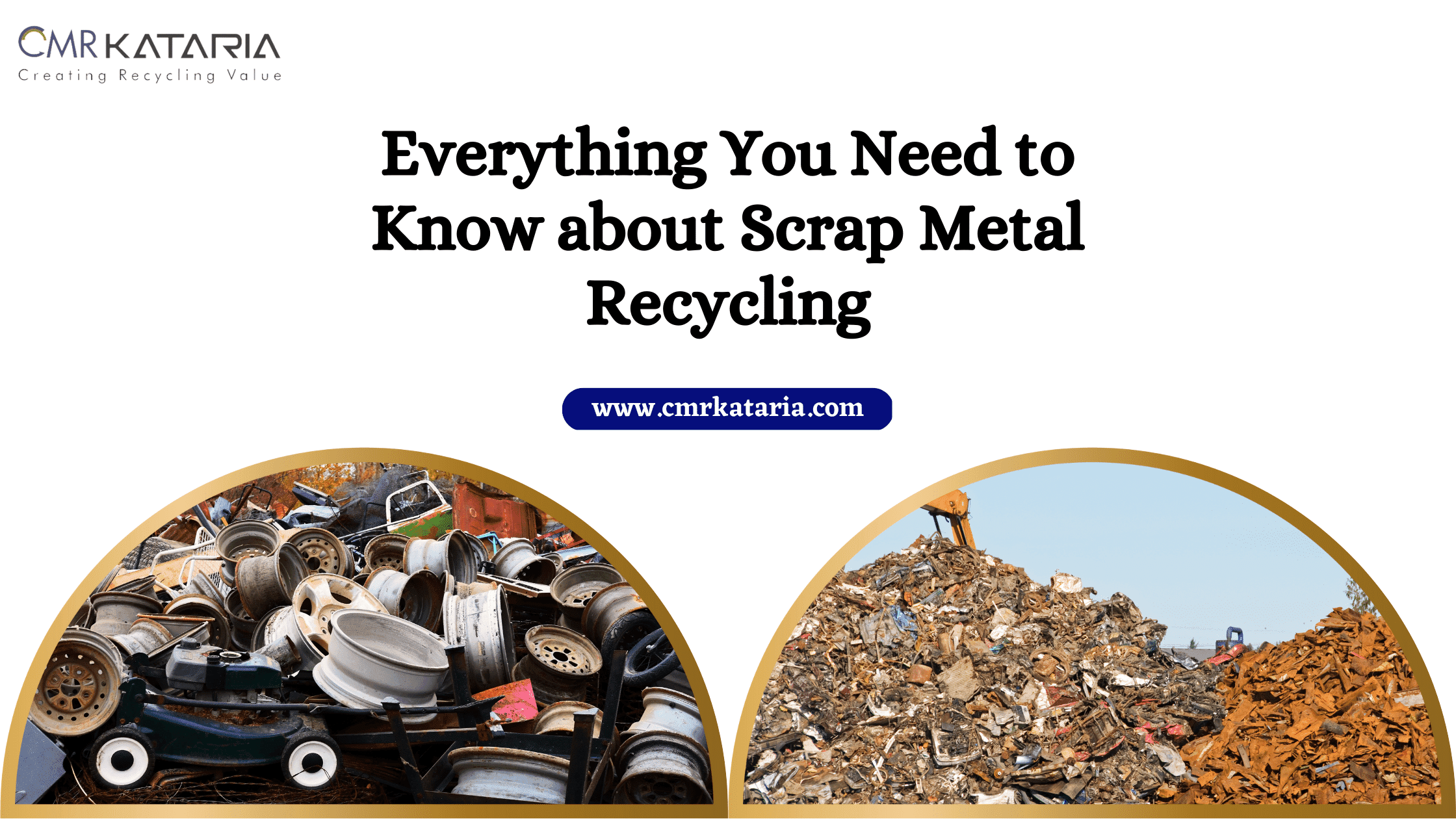Scrap metal recycling is the process of reusing and separating recyclable metal components from structures and end-of-life items so they can be processed and reintroduced as raw materials for the creation of new products. With the new laws in places, there has been a rising demand in the car kabadi market Ahmedabad.
The two categories of scrap metal are ferrous and non-ferrous.
The main sources of scrap ferrous metals are long-lasting items like furniture, tires, and appliances.
Non-ferrous metals can be recycled indefinitely because they don’t lose their chemical characteristics in the process. Of the many non-ferrous metals, aluminium, copper, nickel, lead, tin, and zinc are some of the most widely used base metals. Silver and other precious metals fall under the non-ferrous group as well. There are numerous applications for each of these. The top car scrap dealers in Ahmedabad work on separating the scraps and making them better for reuse.
Industrial Scrap – How do we recycle it?
The National Steel Policy (NSP), which was adopted by the Union Cabinet in 2017, aims to increase India’s steel manufacturing capacity to 300 million tonnes (MT) by the year 2030. The country’s abundance of steel scrap was essential to the concept behind establishing this program. India may simply recycle and utilize the scrap that is already available domestically rather than importing steel waste at exorbitant costs. This scrap is largely made up of old cars. Industrial scrap, however, is much more than just the steel sector.
There are seven steps involved in recycling the scrap which involve –
Collection
Collectors frequently rummage through scrap yards looking for objects made entirely or partially of metal.
Sorting
To ensure that the crude metal is of a high quality, it is crucial to separate the recyclable metal from the non-recyclable waste.
Crushing
The scrap metal is crushed and compacted into cubes before being used. This procedure makes use of sheer/balers.
Shredding
The metal cubes are broken into smaller strips and sheets of metal after being further squeezed and shred. Less energy is required to melt the metal when it is smaller.
Melting
There is a special furnace created to melt down each type of metal. The furnaces are heated to the necessary level for melting the metal.
Purification
The molten metal goes through a number of purifying processes. Once more, it all depends on the metal. Electrolysis, magnetic separation, and other techniques are used.
Cooling
After being purified, the metal is cooled in a different room. Chemicals are then added to the metal in order to give it its density and other qualities. This procedure makes it possible to form the metal.
Non-recyclable materials
Although some scrap metals cannot be recycled, the list of these metals is surprisingly small. It consists of hazardous elements like mercury as well as radioactive metals like uranium and plutonium. However, some metals or metal products are not accepted by scrap yards, frequently due to liability concerns. Because processing such products involves additional processes, they might charge for taking them. If you’re unsure, it’s a good idea to ask a yard before bringing something inside.
Why go for recycling?
The primary incentive for recycling scrap metal is financial since you are compensated for the products you bring to a scrap yard. Certain metals can take hundreds or even thousands of years in a landfill to decompose into elements small enough to be returned to the earth, wasting space the entire while. Lead and mercury are two dangerous metals that should be disposed of properly because they represent a risk of contaminating nearby soil and water over time. More energy is saved by recycling scrap metal than by producing new goods from virgin raw materials.
Environmental Impact of Scrap Metal Recycling
Scrap metal recycling isn’t just a means of managing waste—it’s a step toward a cleaner and more sustainable future. Recycling metal reduces the need for extensive mining operations, which are not only costly but also extremely damaging to the environment. Mining disturbs large areas of land, disrupts ecosystems, and contributes to deforestation and soil erosion. Additionally, the smelting process used in mining releases a significant amount of greenhouse gases into the atmosphere.
By recycling scrap metal, we reduce carbon emissions, conserve natural resources like iron ore and coal, and reduce energy consumption. For instance, recycling aluminium saves up to 95% of the energy needed to produce it from raw materials. Similarly, recycling steel conserves about 60-74% of energy. When multiplied across industries and years, the environmental savings become enormous.
Economic Benefits of Scrap Metal Recycling
Besides its environmental advantages, scrap metal recycling also plays a vital role in boosting the economy. The industry creates jobs at multiple levels—from collection and transportation to sorting, processing, and refining. India’s push toward organised vehicle scrapping centres under the Vehicle Scrappage Policy has further strengthened the sector.
Ahmedabad, in particular, has seen a surge in car kabadi businesses. These authorised scrap dealers are now part of a regulated ecosystem that ensures both safety and efficiency in metal recycling. These businesses also contribute to the circular economy by turning discarded vehicles into raw materials for other industries, thereby reducing dependency on imports and strengthening domestic manufacturing capabilities.
Moreover, metal recyclers can make profits by selling separated high-value metals like copper, aluminium, and brass. Industries looking for cost-effective raw materials also benefit from buying recycled metals, which are often cheaper than newly mined and processed materials.
Role of Technology in Modern Metal Recycling
The scrap metal industry has evolved significantly with the advancement of technology. Modern equipment such as magnetic separators, eddy current separators, and advanced shredders have made sorting and processing faster and more accurate. AI-based material detection systems are being deployed in advanced recycling units to automatically identify different types of metals with precision.
Furnace technology has also advanced. Induction and electric arc furnaces offer more control and energy efficiency during the melting process. These technologies not only speed up the recycling cycle but also ensure that the metal retains its original quality.
With better safety protocols, digitised inventory management, and GPS-enabled logistics, the overall workflow in scrap yards is becoming smarter and more sustainable. The involvement of technology ensures better traceability, quality control, and optimised resource use.
Legal and Regulatory Aspects in India
The Indian government has implemented several policies to support organised scrap metal recycling. The Vehicle Scrappage Policy, announced in 2021, aims to phase out old and unfit vehicles and recycle them responsibly. Under this policy, vehicle owners receive incentives for scrapping vehicles older than 15-20 years. Certified scrapping facilities are authorised to handle the dismantling and recycling process while complying with environmental regulations.
Scrap dealers in Ahmedabad and across India must now follow guidelines related to pollution control, proper documentation, and safe disposal of hazardous materials like batteries and oils. These measures not only ensure safety and compliance but also improve the credibility of scrap yards.
How You Can Contribute
Whether you’re an individual or a business, contributing to the scrap metal recycling process is simple. For households, old appliances, wiring, utensils, and furniture often contain recyclable metals. Instead of throwing them away, you can contact a nearby authorised scrap dealer to have them collected.
If you’re in Ahmedabad, look for registered car scrap dealers or vehicle scrapping centres. Not only do they pay fair market value, but they also ensure that the entire process—from de-pollution to dismantling—is done in an environmentally responsible manner.





